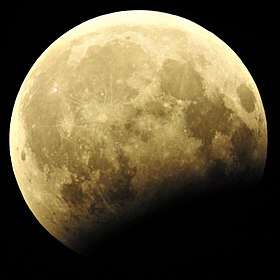May 1976 lunar eclipse
A partial lunar eclipse took place on May 13, 1976, the first of two lunar eclipses in 1976.[1]
| Partial Lunar Eclipse May 13, 1976 | |
|---|---|
| (No photo) | |
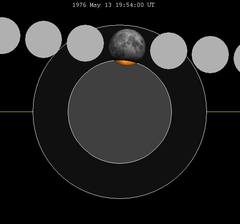 The moon passes west to east (right to left) across the Earth's umbral shadow, shown in hourly intervals. | |
| Series | 140 (23 of 80) |
| Duration (hr:mn:sc) | |
| Partial | |
| Penumbral | |
| Contacts | |
| P1 | UTC |
| U1 | |
| Greatest | |
| U4 | |
| P4 | |
Eclipse season
This is the second eclipse this season.
First eclipse this season: Annular solar eclipse of April 29, 1976
Saros series
Lunar Saros 140, repeating every 18 years and 11 days, has a total of 77 lunar eclipse events including 28 total lunar eclipses. This is the 22nd member of Lunar Saros 140. The previous event was the May 1958 lunar eclipse. The next event is the May 1994 lunar eclipse.
Previous event: Partial Lunar Eclipse on Saturday, May 3, 1958
This event: Partial Lunar Eclipse on Thursday, May 13, 1976
Next event: Partial Lunar Eclipse on Wednesday, May 25, 1994
Visibility
It was completely visible over South America, Europe, Africa, Asia and Australia, seen rising over South America, Europe and Africa, and setting over Asia and Australia. At the greatest eclipse about 12.17% of the Moon was covered by the Earth's shadow.
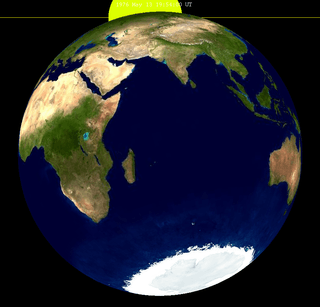
Related lunar eclipses
Lunar year series
| Lunar eclipse series sets from 1973–1976 | ||||||||
|---|---|---|---|---|---|---|---|---|
| Ascending node | Descending node | |||||||
| Saros | Date Viewing |
Type Chart |
Gamma | Saros | Date Viewing |
Type Chart |
Gamma | |
| 110 | 1973 Jun 15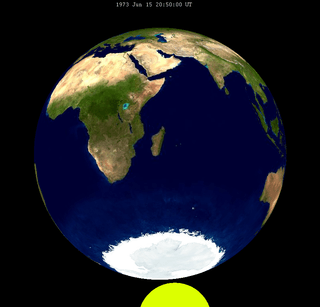 |
Penumbral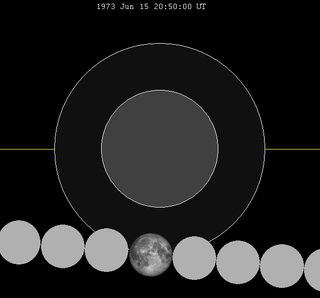 |
-1.32166 | 115 | 1973 Dec 10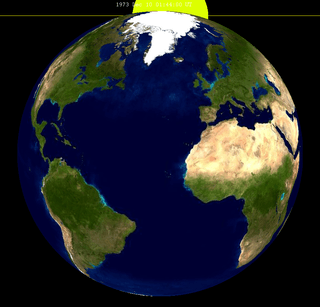 |
Partial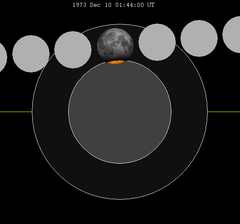 |
0.96441 | |
| 120 | 1974 Jun 04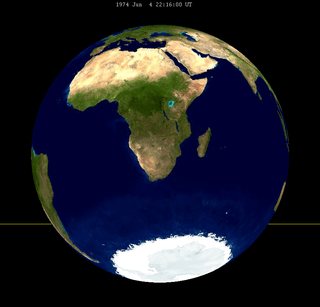 |
Partial |
-0.54887 | 125 | 1974 Nov 29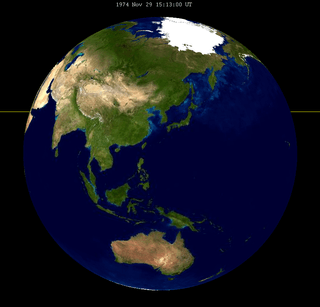 |
Total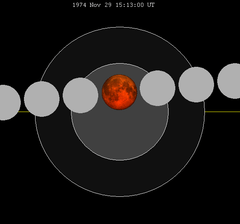 |
0.30540 | |
| 130 | 1975 May 25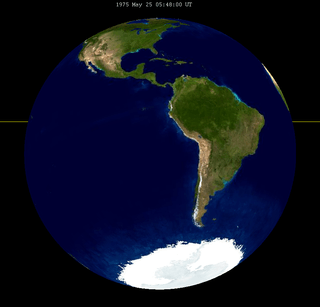 |
Total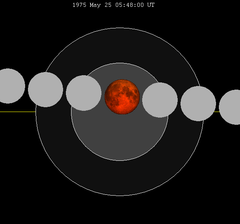 |
0.23674 | 135 | 1975 Nov 18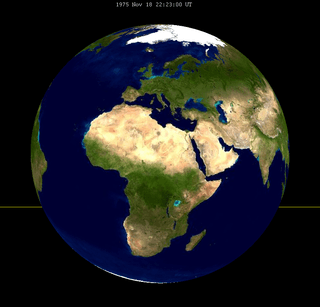 |
Total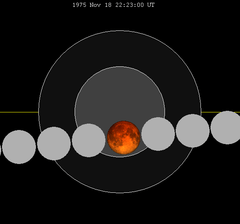 |
-0.41343 | |
| 140 | 1976 May 13 |
Partial |
0.95860 | 145 | 1976 Nov 06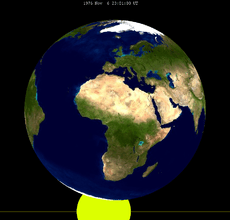 |
Penumbral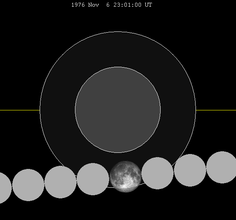 |
-1.12760 | |
| Last set | 1973 Jul 15 | Last set | 1973 Jan 18 | |||||
| Next set | 1977 Apr 04 | Next set | 1977 Sep 27 | |||||
Half-Saros cycle
A lunar eclipse will be preceded and followed by solar eclipses by 9 years and 5.5 days (a half saros).[2] This lunar eclipse is related to two partial solar eclipses of Solar Saros 147.
| May 9, 1967 | May 19, 1985 |
|---|---|
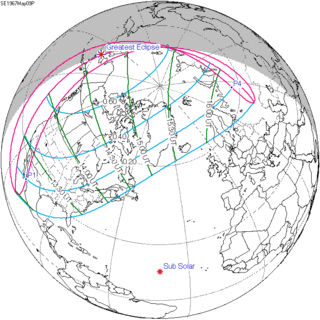 |
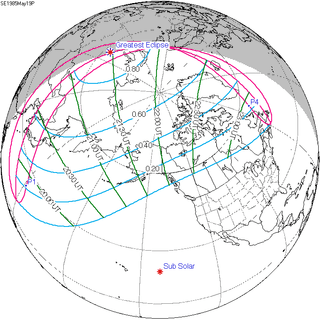 |
See also
- List of lunar eclipses
- List of 20th-century lunar eclipses
Notes
- Hermit Eclipse: Saros cycle 140
- Mathematical Astronomy Morsels, Jean Meeus, p.110, Chapter 18, The half-saros
